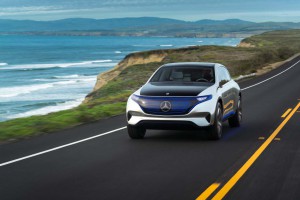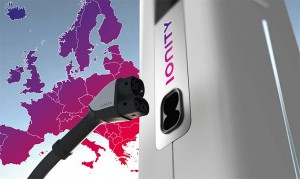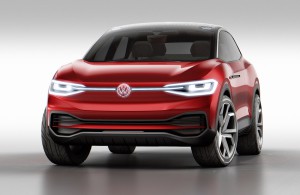Four of Europe’s largest automakers are teaming up to create a network of fast-charging stations across Europe, a move they believe will play “an essential role” in increasing the appeal of battery-electric vehicles by making long-distance travel quick and easy.
The new venture, Ionity, will open 20 high-power charging stations in Austria, Germany and Norway by the end of this year, spaced out at 75-mile intervals along major roads. The goal is to have about 400 of the Level 3 and 4 chargers in place by 2020.
“The first pan-European (high-power charging) network plays an essential role in establishing a market for electric vehicles,” said Ionity CEO Michael Hajesch, adding that a critical goal is “to facilitate long-distance travel” by making it possible to charge up quickly, much as motorists currently can do while driving vehicles powered by internal combustion engines.
Today, the vast majority of plug-based vehicles are charged at home overnight or while at work. That is likely to remain the primary process going forward, said Xavier Mosquet, the author of a new study on the future of automotive electrification, but having high-speed public chargers will be essential to mass acceptance, he stressed, even if the typical EV owner only uses such chargers a couple times a year.
The new study, released Thursday by the Boston Consulting Group, predicts demand for electric vehicles – and thus for charging stations – will grow dramatically between now and 2030 when as much as half of the vehicles sold worldwide will use some form of electrification. That will range from microhybrids up to pure battery-electric vehicles.
(For more on the new BCG electrification study, Click Here.)
Typical home chargers, and a large share of the chargers currently available for the public, rely on 240-volt current at relatively low amperage. For an electric vehicle with a 200-mile range and a drained battery, it can take the better part of a day to fully recharge.
The Ionity network will focus on Level 3, and potentially even Level 4 charging systems using DC current at up to 350 kilowatts. With today’s lithium-ion batteries that could yield a vehicle could get as much as an 80% top-off in under an hour. And, with the new solid-state batteries expected to start phasing in during the early to mid-2020s, that could be cut down to 15 minutes or less, according to industry experts.
With range continuing to increase and battery prices expected to fall by at least half by 2023, according to the BCG study, the next critical step in making EV ownership competitive with a gas- or diesel car will be fast charging.
The Ionity chargers are adopting the Combined Charging System, or CCS, which uses a standardized plug, rather than proprietary plugs unique to each of the manufacturers. That approach has gained acceptance in other parts of the world, including the United States.
(Waymo gives the low-down on its autonomous vehicle tech. Click Here to come along for a ride.)

Fast charging will be critical for driving battery-cars like this Mercedes EQ concept over long distances.
The four manufacturers that have launched Ionity said in a Friday morning statement that “other automotive manufacturers are invited to help expand the network.”
The push to make fast chargers readily available has been gaining traction around the world. In the U.S., private firms like EVgo and Chargepoint are setting up public networks and, in some cases have agreed to work together to make it easier for one firm’s customers to access and pay at a competitor’s chargers.
The California battery-carmaker Tesla has also been setting up its own network of “Superchargers” across North America and in several other parts of the world. The strategy is meant to enhance the appeal of products like the new Tesla Model 3. But the Superchargers use a proprietary plug that cannot be accessed by other manufacturers’ electric vehicles.
(Tesla takes a tumble; Q3 earnings collapse as snags limit production of new Model 3. Click Here for the story.)


